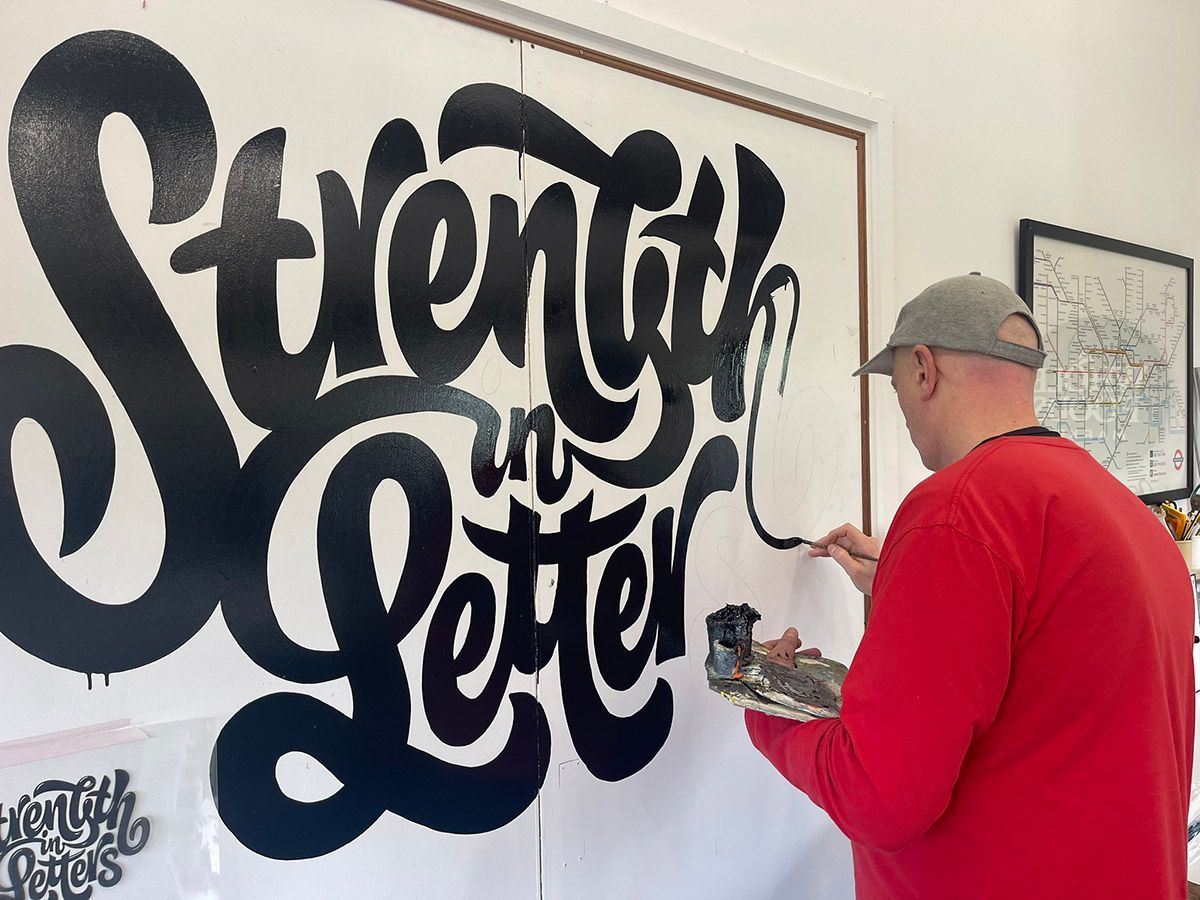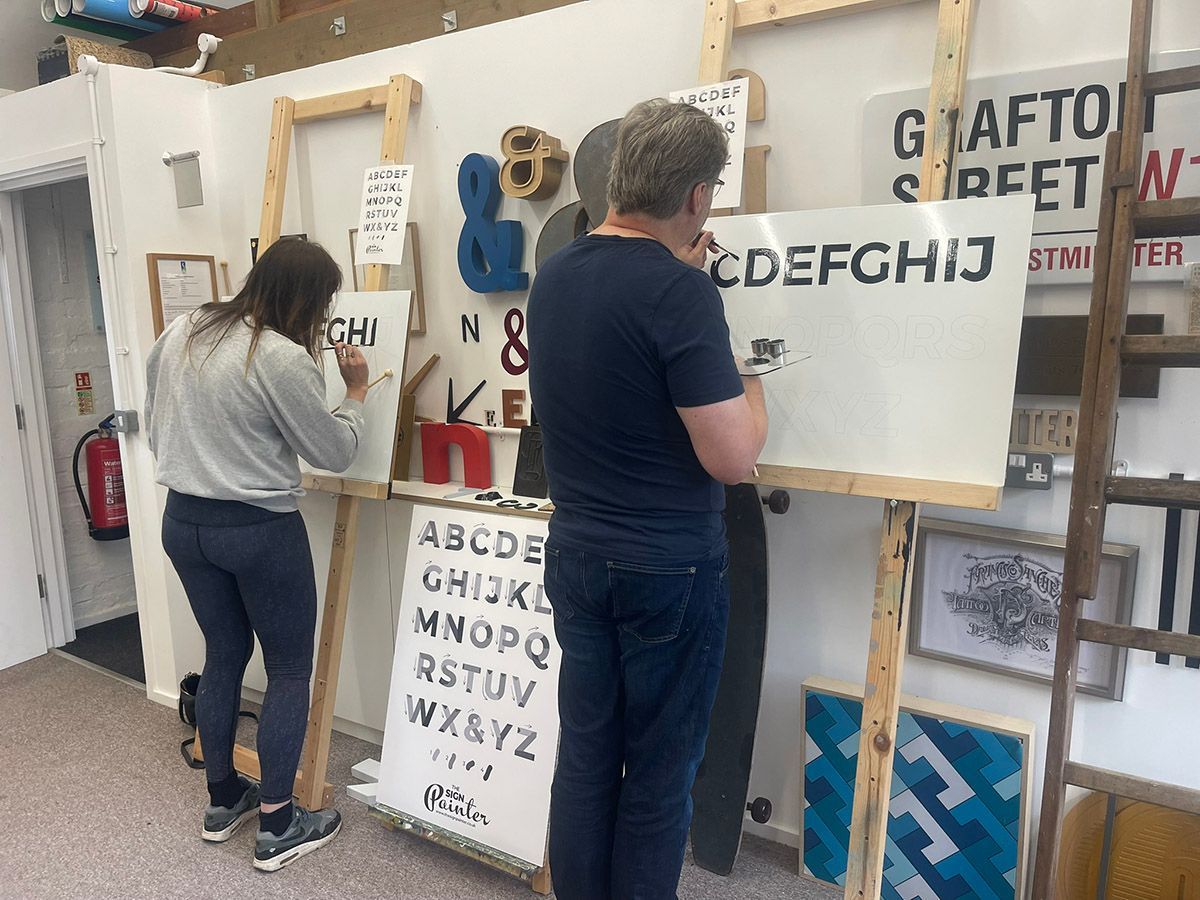Sally Clarke and the 17m coachline
A new client last year gave us the opportunity to do some gilding for an art gallery in St James Square, London. Recently we have also hand painted some large yellow suns in Marylebone and Notting Hill in memory of a famous café owner. Then we were asked to work at Sally Clarke’s in Kensington. This is a coffee shop, selling all hand made food and pastries and they have a restaurant over the road. This month is 40 years since the shop was set up and they are opening a café on the corner.
We were asked to water gild lettering and lines on 4 windows with 2 sets of lettering – Clarke’s Corner Café.
Removal of existing gold leaf and back painted glass, although sad enabled the new designs for the windows to be started. Lots of glass cleaning and scraping, both sides of course so no errors are made assuming a blemish is on the outside, then it isn’t! We used a different approach with these designs as the coachline was at its longest 1700mm. We applied removable vinyl lines and lettering to the glass and then painted over this in gloss paint. While it was drying, within 30 mins we removed the vinyl leaving clear glass.
The next day, when all dry, we degreased the clear glass again and started gilding the clear lines. Carefully cutting each loose leaf into 4 we could then carefully lift these onto the glass that we have just dripped the gold size onto. Bearing in mind, each gold leaf cut into 4 lengths covered approximately 320mm. This is a process that just cant be rushed as even the slightest breath can blow the gold leaf off the gilding pad or even if someone opens a door!
Normally this process would involve gilding straight onto the glass then signwriting the letters and detail over the back, cleaning off the surrounding gold then back paint over all this. Some people are against using modern technology with old processes, but I truly believe that if it achieves the end result and a better result then why not.
Gilding these lines was a real task, knowing that the next day we had to gild them again to cover any gaps. It does play with your head a bit as its such a long process where in some cases you can’t see the end. However, when done again and you walk outside and see the solid gold finish, it gives so much satisfaction especially when the public ask and comment how beautiful it all is.
The 3rd day was finishing off the lines and then gilding the letters, twice of course. 4th and final day was to burnish all the gold, checking for any gaps. It was handy getting to site at 630am in the dark so with the lights on inside it made it easier to spot any. We then marked these with tape and gilded. Turning up the heating in the shop allowed the gold to dry quick. Final job was to mask up all round and then repaint all over each design in gloss black, laying off vertically so no runs.
Water gilding is a slow process that can’t be rushed, it can be painful when gilding with gaps and gold blowing in the slightest breeze, but when finished gives so much pleasure to myself seeing the end result that will be there for years to come. Satisfactions is guaranteed. 😊




Studio 6, Silks Yard, Church Hill
Horsell, Woking, Surrey GU21 4QE
what3words: desks.gets.held
© 2025. The Sign Painter is a trading name of Workmode Ltd Company No. 12443188
Studio 6, Silks Yard, Church Hill, Horsell, Woking, Surrey GU21 4QE
what3words: desks.gets.held
01483 851909 07543 401143 info@thesignpainter.co.uk
© 2025. The Sign Painter is a trading name of Workmode Ltd Company No. 12443188
Studio 6, Silks Yard, Church Hill, Horsell, Woking, Surrey GU21 4QE
what3words: desks.gets.held
01483 851909 07543 401143 info@thesignpainter.co.uk
© 2025. The Sign Painter is a trading name of Workmode Ltd Company No. 12443188

